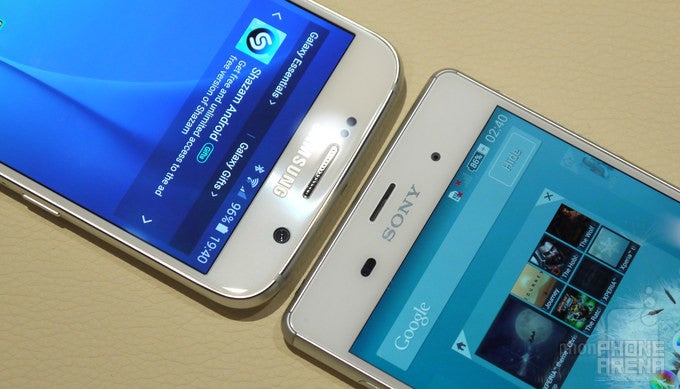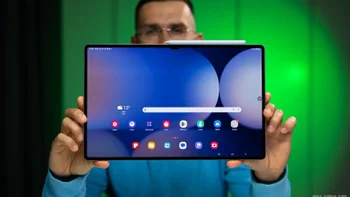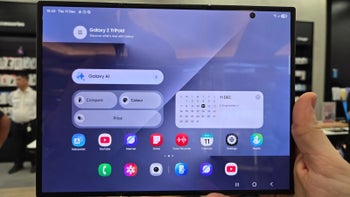Samsung Galaxy S6 vs Sony Xperia Z3: first look

Introduction
The Samsung Galaxy S6 made a splash at Mobile World Congress 2015: after all, it’s the first Samsung phone to feature a sturdy metal frame and glass on both the back and the front, a welcome change from the mundane plastic designs of yesteryear’s Galaxies.
Keep in mind, though, that the Xperia Z3 is a device that’s a few months old, and as such it comes with less capable hardware, but also a reduced price.
Design
The Galaxy S6 is a lot about a re-focus on design: it’s slim and lightweight, made of premium quality materials (metal for the frame and glass on both front and back). The Xperia Z3, on the other hand, features the same materials, but it’s got a slightly different shape, it’s a bit wider, heavier and a hair thicker. The differences are as follows: width measures at 2.78” on the S6 and 2.83” on the Z3, thickness is 6.8mm on the S6 and 7.3mm on the Z3, and finally weigh is 4.87oz on the S6 and 5.36oz on the Z3.
The Galaxy S6 also has a fingerprint scanner that the Z3 lacks. The S6 finger reader is no longer swipe-based - instead, it’s a touch sensor like on the Apple iPhone 6, and that is a welcome improvement.
Display
Samsung bragged about the Galaxy S6 having the best screen on a smartphone. It’s a 5.1-inch Super AMOLED screen with a 1440 x 2560-pixel (Quad HD) resolution, and Samsung has done some huge improvements to the brightness of the S6, saying that it can now go to up 600 nits.
The Sony Xperia Z3, on the other hand, features a 5.2-inch LCD display with a 1080 x 1920-pixel resolution. Both are very sharp displays and it’s hard to see any jaggged pixels on either. If you care about the numbers, the difference in pixel density is 577ppi vs 424ppi.
Interface
The Galaxy S6 runs on the latest version of Android, 5.0 Lollipop, while the Xperia Z3 features Android 4.4 KitKat (with an upgrade path to Lollipop).
Quite honestly, TouchWiz is the single area we’ve hoped to see most improvements, and - at first look - the new version of Samsung’s interface indeed appears to deliver. It seems to run a bit faster, and Samsung has also trimmed the fat off TouchWiz making it less visually cluttered, and some (but not all) icons are streamlined to look better. There’s still this cheerful cartoonish look, but it’s much less visually self-assertive.
Sony, on its part, uses its custom skin with very few touch-ups over stock Android. It is fast, has to-the-point speedy animations, and works well without much of a gimmicky element to it.
Samsung is now also a step ahead of the rest in the Android ecosystem with Samsung Pay, the new payment system using the fingerprint scanner. Samsung Pay launches in the United States and Korea this summer. Let’s see how this plays out in the near future.
Processor and Performance
The Galaxy S6 features a 14nm octa-core system chip with a big.LITTLE configuration using four cores running at up to 2.1GHz (likely, A57s) and four running at up to 1.5GHz (likely, A53s), and it’s the first phone to come with a 14nm chip, according to the company. Samsung did not say that it is using the Exynos 7420, but all indications point in that direction.
The Xperia Z3, on its part, ships with a Snapdragon 801 system chip silicon, a quad-core chip with Krait cores running at up to 2.5GHz. Take a look at the benchmark scores right below to see how the two compare.
Good news is that with the Galaxy S6, Samsung does away with 16GB of internal storage and finally makes the jump to 32 gigs of internal storage in even the base model, while the Xperia Z3 features half the storage at 16 gigs. The Z3, however, does support an expansion microSD memory card slot, while the S6 does not have expansion capabilities.
Camera
The Samsung Galaxy S6 sports a 16-megapixel main camera, while the Xperia Z3 has gotten a 20-megapixel main shooter. The Galaxy S6 also has optical image stabilization (OIS), while the Xperia Z3 has (a very good) software stabilization.
Technically, the S6 has a very wide, f/1.9 aperture lens (on both the front and rear cam), while the Z3 features an f/2.0 lens on the back.
If you watched the Unpacked event, you have seen Samsung take a jab at Apple and show some very impressive samples to demonstrate how it has outgunned it in the camera department. As for the Xperia Z3, stay tuned for camera samples (we hope to add them here soon).
Battery life
Samsung brings some neat improvements to the Galaxy S6 battery life and charging speed. Spec geeks will be quick to notice that the actual battery capacity has gone down from 2,800mAh on the S5 to 2,550mAh on the S6, but with a more energy-efficient system chip, its most efficient display, and all of Android Lollipop’s improvements Samsung is able to achieve 12h of Wi-Fi browsing, 11h of LTE browsing, 13h of video playback and 49h of music playbac.
Samsung also introduces fast charging capabilities to its Galaxy S6, a feature that the Z3 lacks. The S6 charges up to get an additional 4 hours of use with just a 10-minute trip to the charger. The Galaxy S6 also ships with wireless charging capabilities without the need for an additional cover which is great (it’s also another feature the Z3 lacks).
Expectations
The Galaxy S6 finally brings Samsung in the territory of premium looking and feeling smartphones, a place where Sony has been for quite a while with its Xperia Z series.
The Galaxy S6 is a bit more compact and thinner, which is nice, but it also brings some huge improvement to performance: it’s the one with the more capable silicon, a faster camera, and a newer version of Android 5.0 Lollipop. With all of those trump cards, those who don’t care about the price, would likely go for Samsung’s solution, don’t you think?

Follow us on Google News










Things that are NOT allowed:
To help keep our community safe and free from spam, we apply temporary limits to newly created accounts: